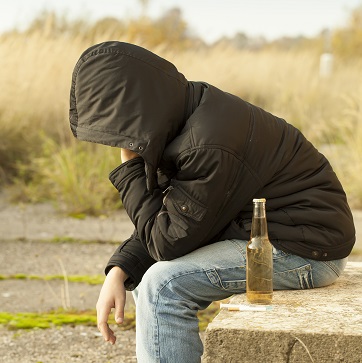GHB is the common shorthand for gamma hydroxybutyrate, a drug of abuse identified as both a “club drug” and a “date rape” drug. People who use this drug repeatedly over time can develop a severe form of drug withdrawal that has the potential to produce fatal results. In a study published in February 2014 in the journal Drug and Alcohol Dependence, a team of Dutch researchers investigated the best options for treating individuals affected by GHB withdrawal. These researchers concluded that the appropriate option varies according to any given person’s level of involvement with GHB use.
What Is GHB?
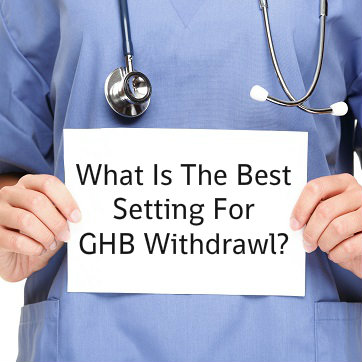 GHB occurs naturally inside the human brain, but only in small amounts. Trace amounts of the chemical also appear in certain types of wine and beer. A specific form of pharmaceutical GHB, called sodium oxybate (Xyrem), has legitimate medical use as a treatment for the sleep disorder narcolepsy. However, access to this medication is strictly controlled through federal law, and most people who use/abuse GHB recreationally rely on illegally produced batches made by clandestine drug manufacturers.
GHB occurs naturally inside the human brain, but only in small amounts. Trace amounts of the chemical also appear in certain types of wine and beer. A specific form of pharmaceutical GHB, called sodium oxybate (Xyrem), has legitimate medical use as a treatment for the sleep disorder narcolepsy. However, access to this medication is strictly controlled through federal law, and most people who use/abuse GHB recreationally rely on illegally produced batches made by clandestine drug manufacturers.
GHB alters normal brain and body function by reducing the rate of communication inside the central nervous system. The baseline effects of this reduction include both sedation and a form of euphoric intoxication. In addition, roughly two-thirds of all users of the drug lose consciousness. The euphoric and sedating effects of GHB largely account for its use as a club drug. The sedating and unconsciousness-producing effects of GHB largely account for its use as a date rape drug; its use as a date rape drug also stems from its ability to trigger amnesia. Other known potential effects of GHB use include hallucinations, nausea, vomiting, confusion, headaches and loss of body control. People who overdose on the drug can develop seizures, experience a dangerous decline in normal lung function, go into a coma or die.
Addiction To GHB And Withdrawal From It
When used repeatedly over time, GHB can trigger the long-term changes in brain function required to produce substance addiction. One of the classic signs of any form of drug or alcohol addiction is the onset of withdrawal symptoms when substance use ends or tapers off rapidly. In the case of GHB addiction, potential withdrawal symptoms include excessive sweat production, a highly anxious mental state, uncontrollable body tremors and sleeplessness. Some people develop severe forms of these symptoms that can lead to highly debilitating or even fatal changes in brain and body health.
What Is The Withdrawal Treatment Setting?
In the study published in Drug and Alcohol Dependence, researchers from three Dutch institutions sought to establish guidelines for the best way to address the effects of GHB withdrawal. They undertook this work because, despite the potentially severe nature of this withdrawal, some individuals may recover well in an outpatient setting rather than in a hospital. The researchers began the project by gathering case studies of patients going through GHB withdrawal from 40 professionals specializing in addiction medicine. These case studies were reviewed by another 15 addiction specialists who made recommendations for hospitalization or outpatient care for each patient under consideration. In the study’s third and final stage, five specialists with extensive experience in treating GHB withdrawal reviewed the rationale used for assigning any given patient to hospitalization or outpatient treatment.
All told, 20 patients going through GHB withdrawal were assessed and/or reviewed by the three groups of experts. The researchers concluded that two main factors account for the decision to either hospitalize a person going through withdrawal or recommend outpatient treatment: the amount of GHB used each day and the frequency of GHB intake. As a rule, patients who take 32 grams or more of the drug every day and use the drug at least every two hours require hospitalization when going through withdrawal. Patients who take smaller daily amounts of the drug and use the drug less than every two hours are potential candidates for outpatient withdrawal treatment.
The authors of the study published in Drug and Alcohol Dependence note that people with diagnosable psychiatric problems who go through GHB withdrawal may also require hospitalization rather than outpatient care. Conversely, people with strong support networks have an increased chance of receiving outpatient treatment when going through withdrawal. The authors believe that, overall, their work provides a solid framework that doctors can use when determining the best treatment setting for a person withdrawing from GHB use.
Not all people get involved in substance abuse for the same reason. Broadly speaking, some people are motivated primarily by the desire to increase their experience of pleasure, while others are motivated primarily by the desire to escape or avoid painful experiences. According to the results of a study published in March 2014 in the journal Addictive Behaviors, the underlying reasons for marijuana use have a significant impact on the results of treatments designed to address cannabis addiction. It appears that addicts motivated by pain avoidance have a harder time maintaining their recovery than their peers motivated by pleasure-seeking.
What Is Cannabis Use Disorder?
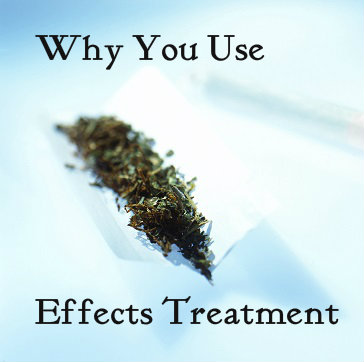 Marijuana or cannabis addiction is officially classified as part of a larger condition called cannabis use disorder. Some people affected by this disorder are not addicted to marijuana or other forms of cannabis, but still experience serious life impairment as a result of their drug use. Other affected individuals have undergone the long-term changes in brain chemistry that set the stage for marijuana/cannabis addiction and all other forms of substance addiction. Many people think that marijuana/cannabis addiction is a rare phenomenon. However, current evidence indicates that nine out of every 100 users of marijuana will develop symptoms that qualify them for an addiction diagnosis. Teenage marijuana users develop diagnosable addiction symptoms at close to twice this rate. In addition, addiction rates skyrocket among daily users of all ages; one-quarter to one-half of these individuals will eventually develop diagnosable symptoms.
Marijuana or cannabis addiction is officially classified as part of a larger condition called cannabis use disorder. Some people affected by this disorder are not addicted to marijuana or other forms of cannabis, but still experience serious life impairment as a result of their drug use. Other affected individuals have undergone the long-term changes in brain chemistry that set the stage for marijuana/cannabis addiction and all other forms of substance addiction. Many people think that marijuana/cannabis addiction is a rare phenomenon. However, current evidence indicates that nine out of every 100 users of marijuana will develop symptoms that qualify them for an addiction diagnosis. Teenage marijuana users develop diagnosable addiction symptoms at close to twice this rate. In addition, addiction rates skyrocket among daily users of all ages; one-quarter to one-half of these individuals will eventually develop diagnosable symptoms.
Emotional Motivations
Much of human behavior stems from the conscious or unconscious impact of various emotions and emotion-based motivations. Psychologists commonly refer to pleasure-seeking motivations as “positive” reasons for engaging in a behavior. Conversely, they commonly refer to pain-avoidance motivations as “negative” reasons. When it comes to substance intake, the terms “positive” and “negative” don’t mean that some people have “good” reasons for using drugs or alcohol while others have “bad” reasons. Instead, they simply mean that some people use drugs and alcohol because they believe that substance use will enhance their pleasurable experiences, while others use drugs or alcohol because they believe that substance use will help them avoid feeling bad or escape current bad feelings. Individuals with “positive” motivations for substance use can develop problems with abuse and/or addiction just like people with “negative” motivations. However, the two groups of substance users typically hold distinctly different mental/emotional points of view about themselves, their surroundings and their experiences.
Impact On Treatment Outcomes
In the study published in Addictive Behaviors, researchers from the University of Washington and Virginia Polytechnic Institute and State University looked at the treatment outcomes of marijuana addicts whose drug use stems from “negative” motivations. They conducted their work with information gathered from 87 adults who underwent treatment for issues related to a chemical reliance on marijuana. These participants provided information on the reasons they used marijuana in any given situation. In turn, for each participant, the researchers matched these motivations to three known markers of diminished mental well-being: lack of belief in the ability to control one’s behavior, use of ineffective coping strategies to deal with unpleasant emotions and an impairing state called psychological distress.
The researchers concluded that marijuana addicts who use the drug for “negative” reasons have increased chances of believing they can’t control their actions, using ineffective coping mechanisms to deal with their emotions and developing substantial amounts of psychological distress. The researchers also concluded that each of these adverse impacts develops independently of the others, which means that attempts to address one of the three issues will not reduce risks for the other two. In addition, the researchers found that, compared to marijuana addicts who don’t use the drug for “negative” reasons, marijuana addicts who do use the drug for these reasons have greater problems achieving or maintaining abstinence from marijuana intake after they complete their treatment programs.
The authors of the study published in Addictive Behaviors note that their new findings echo previous research efforts that indicate that “negative” reasons for drug or alcohol use produce more problems during recovery than “positive” reasons for drug or alcohol use. Current psychotherapeutic approaches for people affected by marijuana addiction typically focus on dealing with unpleasant or unwanted emotional states. The study’s authors believe that their work validates this approach and serves as an additional reason for continuing to focus on treating “negative” emotions in people who develop cannabis-related addiction issues.
Read About The Most Abused Substances To Self-Medicate Anxiety
24 Mar 2014
How Can You Forgive A Recovering Addict?
If you have suffered because of a loved one’s addiction, forgiveness may be difficult for you to give to that person. Many addicts in recovery apologize to those they have wronged. They do not expect or require forgiveness, but if you can find it in your heart to give it, forgiveness can be good for everyone. At a very minimum, forgiveness will allow you to reestablish a relationship. If you can’t forgive your loved one, you can no longer have a real relationship. Consider the benefits and then work toward real forgiveness.
What Does It Mean To Forgive An Addict?
 Before giving this gift of forgiveness, both to yourself and to the recovering addict, make sure you understand what it means. Forgiveness is a conscious decision. You must decide to give it and then live with it. Do not do it until you are ready.
Before giving this gift of forgiveness, both to yourself and to the recovering addict, make sure you understand what it means. Forgiveness is a conscious decision. You must decide to give it and then live with it. Do not do it until you are ready.
What forgiveness does not mean is forgetting what your loved one did to you. It does not mean that you are letting him off the hook or that there are no consequences because of his actions. It does not mean that you have to stop being angry. Forgiveness does not even mean that you have to reconcile with the person who hurt you.
How Can I Forgive?
Keep in mind that forgiveness is a journey. If you are just starting to think about forgiving a recovering addict, you may still be days, weeks, or months away from being ready to be in that state of mind. Take your time, but do think about forgiveness and what it would mean to you and your loved one. Make this process your own. Don’t wait for your loved one to apologize because it may never happen. Forgiveness is your choice.
Learn about addiction in an effort to get to the point at which you can forgive. Not being an addict yourself, it can be almost impossible to understand what your loved one went through. If you still struggle to find forgiveness in your heart, consider seeing a therapist or counselor. A professional can help you work through all the painful and confusing emotions you are feeling.
How Can Forgiveness Help?
Forgiveness is something you should largely do for yourself, but it can also help your loved one. He has been carrying around shame and guilt to an extent that you may never realize. Whether he has vocalized this to you yet or not, he is feeling bad. Your forgiveness would probably mean the world to him and studies have found that being forgiven is a powerful tool to help addicts stay sober.
By forgiving your loved one, you also give yourself an important gift. Research shows that people who forgive others often are less likely to be depressed, have higher self-esteem, have more friends and better marriages, have lower blood pressure, have a stronger immune system, and are less likely to have heart disease. Not only is forgiveness good for your mental health, it also impacts your physical wellbeing. Holding a grudge has a powerful effect on your psyche and your physical body.
You owe it to yourself at the least to find the room in your heart for forgiveness. Once you do it you will find that a weight has been lifted. You will feel lighter and freer without the burden of holding on to negative feelings. Take your time, but do try to get to that place. You won’t regret it.
Read More On How to Support A Recovering Addict After Everything
21 Mar 2014
Is Your Loved One Abusing Pain Pills?
Prescription painkillers are serious drugs that are effective and help many people, but they are also risky. These medications are opioids, which means that they produce a euphoric feeling in the user, or a high, and they are addictive. If someone you love has been prescribed a narcotic painkiller, be aware of the dangers and the possibility of abuse. Know how to read the signs that he is abusing the pills and be prepared to intervene before it is too late.
What Are Opioid Painkillers?
Opioid painkillers are controlled substances used to treat severe and chronic pain. An opioid is any drug that is derived from the compounds found in the opium poppy. Heroin, the highly addictive street drug, is an opioid. Prescription opioid painkillers include oxycodone, hydrocodone, morphine and hydromorphone. They are sold under various brand names. These drugs block pain signals, but they also cause a pleasant feeling, and if abused, create changes in the brain that often lead to dependence.
What Are The Signs Of Opioid Abuse?
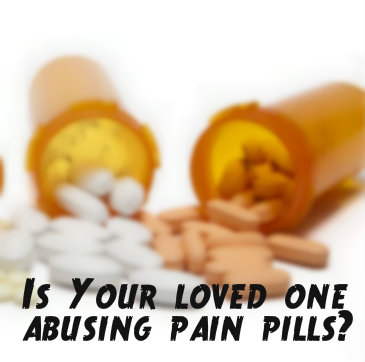 It is important to understand that there is a difference between abuse and addiction. Your loved one may be abusing painkillers if he is using them to get high or if he is taking more than he was directed by his doctor to take. Abuse is not addiction, but it can easily lead to that state. Being aware of the signs of abuse is important so that you can help him before he becomes addicted. If he is abusing his medications, chances are he will try to hide it from you. Here are some signs to watch for:
It is important to understand that there is a difference between abuse and addiction. Your loved one may be abusing painkillers if he is using them to get high or if he is taking more than he was directed by his doctor to take. Abuse is not addiction, but it can easily lead to that state. Being aware of the signs of abuse is important so that you can help him before he becomes addicted. If he is abusing his medications, chances are he will try to hide it from you. Here are some signs to watch for:
- Look for signs that your loved one is high on opioids. If he is taking them as directed he may experience a little bit of a high, but if he is abusing his pills the symptoms will be greater. Someone who is high on opioids will become drowsy and have slowed breathing and movements. He may also become anxious, have mood swings or become apathetic or depressed.
- Opioid abuse causes a lack of energy. If your loved one seems tired all the time, especially throughout the day, and skips out on activities he normally enjoys, he may be abusing his medications.
- Opioids also cause people to lose focus. Look for signs that your loved one’s attention span is changing. Maybe he can’t focus on his favorite television show. Maybe he is having problems at work because he loses focus and drifts.
- Look for physical signs. Opioids cause certain physical changes that you can watch for. Look for a lot of itching, flushing in the neck or face, extremely constricted pupils, a runny nose, a lot of yawning, nausea and vomiting and flu-like achiness.
- Watch for secretive behaviors. If your loved one is abusing his medications, he likely knows he is doing something wrong, and he will probably try to hide the behavior from you. Be aware of any behaviors that seem unusual or that indicate he may be hiding something from you.
- Be aware of mood swings or personality changes. Any kind of drug abuse can cause behavioral and personality changes. If he is acting strangely and you have no other explanation for his mood swings, drug abuse may be the culprit.
If your loved one has been prescribed opioids for pain, there is no reason to assume he will begin abusing them. However, many people have fallen into that trap without meaning to do so. Be aware of the signs of abuse and pay attention. You could be saving his life by intervening.
Read About Teens Abusing Painkillers
Methadone is an opioid medication sometimes used to treat people addicted to heroin or other powerful opioid drugs. Affected individuals commonly receive this medication on an ongoing basis rather than for a limited period of time. This pattern of usage can potentially create conflicts with participation in self-help support groups called 12-step groups, which typically place a high emphasis on complete drug and alcohol abstinence. In a study published in late 2013 in the Journal of Groups in Addiction & Recovery, researchers from three U.S. institutions sought to determine how many people receiving methadone also participate in a 12-step program.
What Is Methadone?
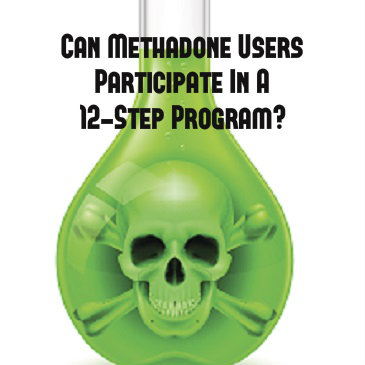 While methadone is an opioid substance, it has somewhat different properties than heroin or other opioid drugs of abuse. Those drugs are characterized by their ability to produce the rapid onset of a highly pleasurable state. Methadone, on the other hand, produces effects that build more slowly and result in a relatively low level of euphoric sensation. Doctors can exploit these properties and use methadone as a substitute for opioid drugs of abuse. Although an addict using methadone still has opioids in his or her bloodstream, he or she typically experiences a substantial reduction in the risk of drug-related harm. Although some addicted individuals receive only short-term methadone treatment, others participate in methadone maintenance treatment, an ongoing approach that uses methadone as an opioid drug replacement for extended periods of time.
While methadone is an opioid substance, it has somewhat different properties than heroin or other opioid drugs of abuse. Those drugs are characterized by their ability to produce the rapid onset of a highly pleasurable state. Methadone, on the other hand, produces effects that build more slowly and result in a relatively low level of euphoric sensation. Doctors can exploit these properties and use methadone as a substitute for opioid drugs of abuse. Although an addict using methadone still has opioids in his or her bloodstream, he or she typically experiences a substantial reduction in the risk of drug-related harm. Although some addicted individuals receive only short-term methadone treatment, others participate in methadone maintenance treatment, an ongoing approach that uses methadone as an opioid drug replacement for extended periods of time.
What Is A 12-Step Program?
Twelve-step programs get their name because they emphasize participation in a series of 12 consecutive “steps” as the key to overcoming a reliance on drugs or alcohol (or certain harmful behaviors). The specific steps undertaken vary from program to program; however, common features of most programs include admitting powerlessness over one’s harm-producing behavior, seeking some sort of spiritual assistance to cope with harm-producing behavior, assuming moral accountability for one’s harmful actions and making amends to people who suffer from one’s harmful actions.
As a rule, 12-step programs emphasize the need to stay substance-free. In order to help group members achieve this goal, they employ a sponsor system that relies on longer-term members to mentor shorter-term members and provide the encouragement needed to remain abstinent from substance use. Two of the most well known 12-step groups in the U.S. are Alcoholics Anonymous and Narcotics Anonymous.
How Many Methadone Users Participate In A 12-Step Program?
In the study published in the Journal of Groups in Addiction & Recovery, researchers from the Institute for Behavior and Health, Chestnut Health Systems and Partners in Drug Abuse Rehabilitation and Counseling investigated the degree of overlap between participation in methadone maintenance treatment and participation in a 12-step program. They conducted this investigation with the help of 322 adults currently participating in methadone programs. These adults were asked to submit information on their involvement in Alcoholics Anonymous and Narcotics Anonymous during the year prior to the start of the study. The researchers also asked them to detail their level of adherence to these 12-step groups’ program requirements.
The researchers found that fully two-thirds of the adults participating in methadone maintenance treatment also had a history of recent involvement with Alcoholics Anonymous, Narcotics Anonymous or both 12-step groups. Seventy-two percent of these individuals reported receiving important benefits from their involvement in Alcoholics Anonymous, while 77 percent reported receiving benefits from their involvement in Narcotics Anonymous.
Does A 12-Step Program Work For Methadone Users? And Why Are They Hiding Their Methadone Use?
However, the researchers concluded that, compared with 12-step members not using methadone, the methadone patients had a substantially smaller overall level of program involvement. For example, only half of the methadone-using members regularly attended meetings with a single group of 12-step practitioners. Only a quarter of the methadone-using members worked with a sponsor, and only 13 percent of these members ended up acting as sponsors for others. In addition, only 21 percent of the methadone users vigorously pursued the completion of the 12 steps that form the basis of 12-step programs.
The authors of the study published in the Journal of Groups in Addiction & Recovery found that roughly a quarter of all the methadone users who attended Alcoholics Anonymous or Narcotics Anonymous felt that their status as methadone recipients negatively affected their 12-step experiences. In addition, roughly one-third of all the methadone users actively hid their participation in methadone maintenance treatment from their 12-step peers. Altogether, the study’s findings indicate that methadone users who participate in 12-step programs experience widely varying outcomes from that participation.
Read About The Facts And Myths Of Methadone
Homelessness is a socioeconomic condition that directly affects well over a million Americans in any given year. For a number of reasons, homeless people are significantly more likely than the rest of the population to develop serious problems with substance abuse or addiction. In a study published in September 2013 in the journal Addiction, researchers from the RAND Corporation examined the types of social connections that help define the ways in which homeless teenagers and young adults use or abuse drugs or alcohol.
Homelessness Statistics
No one really knows how many people in America are homeless at any particular point in time. However, according to recent figures compiled by the federal Substance Abuse and Mental Health Services Administration (SAMHSA), on a representative day in 2010, at least 400,000 individuals in the U.S. didn’t have a fixed home address and either lived on the streets or in some sort of shelter or temporary housing. In a 12-month period that overlapped parts of both 2009 and 2010, more than 1.5 million people qualified as homeless. Some homeless people only lack permanent housing for relatively short amounts of time; however, on a typical day, more than 100,000 Americans lack permanent housing on a long-term basis.
Who Makes Up For Most Of The Homelessness In America?
In the U.S., men and boys experience homelessness almost twice as often as girls and women. Almost 22 percent of all homeless Americans are children or teenagers below the age of 18. Young adults between the ages of 18 and 30 make up another 23.5 percent of the U.S. homeless population. However, adults between the ages of 31 and 50 have the highest overall rate of homelessness. In descending order, the three American ethnic groups most likely to experience homelessness are non-Hispanic whites, African-Americans and Hispanic whites.
Homelessness And Substance Abuse
Current estimates indicate that as many as 50 percent of all long-term homeless Americans are affected by serious problems with substance abuse or substance addiction. When rates for drug- or alcohol-related issues in time periods before or after homelessness are taken into account, this figure rises to more than 80 percent. In many cases, problems with substance abuse or addiction appear before homelessness occurs and contribute to the changing life circumstances that cause an affected individual to lose his or her attachments to a permanent home. However, in other cases, the difficulties of homelessness contribute to the onset of excessive, dysfunctional drug or alcohol consumption. Mental illness is also a frequent contributor to the declining life circumstances of homeless people.
Social Connections Important Regarding Drug Use
In the study published in Addiction, the RAND Corporation researchers sought to identify the people who are most likely to participate in drug or alcohol use with homeless teenagers and young adults. They conducted their work with the help of 419 homeless people between the ages of 13 and 24 from the greater Los Angeles area. Each of these individuals was asked to name 20 people whom they interacted with socially. In addition, the participants were asked to detail their 20 social contacts’ relevant background information and level of involvement with drug or alcohol use.
After examining their data, the researchers concluded that, in descending order, homeless youths are most likely to engage in alcohol use with their intimate sexual partners and people in their social circles who use drugs, engage in dangerous sexual practices, act as opinion formers, provide some sort of physical or emotional support, and have popular social standing. They also concluded that, in descending order, homeless youths are most likely to engage in drug use with their intimate sexual partners and people in their social circles who drink alcohol, engage in dangerous sexual practices, act as opinion formers, provide physical or emotional support, and have popular social standing.
The Significance Of Homelessness And Substance Abuse
Based on their findings, the authors of the study concluded that homeless teenagers and young adults tend to share drug and alcohol use with peers who have more than one clear risk for substantial problems with health or well-being, as well as with peers who in some way dominate or determine the ways in which they view and interact with the world. The authors believe that public health officials and abuse/addiction specialists can use this information as the basis for improved efforts to reach homeless youths affected by substance use/abuse and reduce their chances of developing or continuing dangerous patterns of drug or alcohol intake.
Read About How Volunteering Can Aid Your Own Recovery
Denial is a classic hallmark of addiction. Addicts cause themselves harm, they damage relationships with people they love, they get into legal trouble and financial trouble as well, and yet many will claim not to have a problem with drugs or alcohol. This is called denial, and while it is not a part of every addict’s arsenal, it is a very common defense mechanism. Until the veil of this denial can be lifted, an addict is unlikely to get help. By recognizing the signs of denial you can learn to help your loved one come to the realization that he needs help.
Is It Denial Or An Outright Lie?
 Lying is a conscious act meant to deceive. Your loved one may lie to you all the time. Lying is another defense mechanism used by addicts. To hide just how bad the problem is, he may lie to you about any number of things. To be in denial, however, is different. If your loved one is in denial, he truly believes that he doesn’t have a problem. It is frustrating to deal with an addict in denial, but realize that he is not trying to hurt you. He simply can’t see the extent of his problem.
Lying is a conscious act meant to deceive. Your loved one may lie to you all the time. Lying is another defense mechanism used by addicts. To hide just how bad the problem is, he may lie to you about any number of things. To be in denial, however, is different. If your loved one is in denial, he truly believes that he doesn’t have a problem. It is frustrating to deal with an addict in denial, but realize that he is not trying to hurt you. He simply can’t see the extent of his problem.
What Is Denial?
There are several different forms that denial can take. If you are dealing with someone who is in complete denial about his problem, he is totally oblivious to the harm that his drinking or drug use is causing. You may also be dealing with a case of partial denial. Addicts who only partially believe they have a problem may recognize that their drug use or drinking is a bad habit, but may deny the issues it is causing. Perhaps the most harmful type of denial occurs when the addict fully admits to having a problem, but denies needing any alcohol abuse help.
How Can You Recognize Denial?
Addicts are very good at behaving as if everything is fine. They strive to hide the damage that their addictions cause and present a normal face to the world. If you think your loved one is in deeper than he is letting on, look for signs that he is in denial of the severity of his problem. For instance, addicts in denial do a lot of rationalizing. He makes excuses for why he drinks or uses drugs. Maybe he says that he needs to drink after work to decompress.
Those in denial also tend to minimize their problems. Without even realizing that he is being untruthful, your loved one may tell you he had just two drinks at the bar, when he really had five. Avoidance is another denial strategy. Addicts sometimes withdraw from and avoid loved ones so they don’t have to have conversations about their behaviors. Also look out for blaming and bargaining. If your loved one blames external forces, even you, for his problem, he is in denial. He may bargain with you to let him have a few drinks if he promises not to drink the next day.
Addicts are good at denial. They deny their problem to others and to themselves. They get so good at it that denial becomes another unhealthy habit and a roadblock to getting help. If you think your loved one needs help, avoid falling into the trap of believing his denials. Trust your instincts and do your best to help him see what you see. If you fail to convince him, bring in other people who care about him and consider hosting an intervention. Addiction is a serious disease, you need to break through denial in order to get treatment and find success in recovery.
Read More About How You Can Help Someone With An Addiction
Peer pressure is a powerful force. You probably remember experiencing it yourself. It can take tremendous strength of will to say no in the face of your peers urging you to do something. If you have a teenage son or daughter, remembering what peer pressure was like might keep you up at night. The good news is that you have the potential to be the most powerful influence in the lives of your children. If you take the time to help your teen understand the dangers of risky behaviors, keep open communication and get to know your teen, you can help her successfully resist peer pressure.
What Is the Role of Peer Pressure in Adolescence?
 It turns out that peer pressure is normal and that it’s not always a negative thing. Teens are learning how to become adults by learning how to fit in with peers. While always conforming to the standards of others is not good, neither is standing out all the time. To grow into adults that contribute in meaningful ways, teens need to learn to strike a balance. They need to fit into social groups while also learning to make their own decisions.
It turns out that peer pressure is normal and that it’s not always a negative thing. Teens are learning how to become adults by learning how to fit in with peers. While always conforming to the standards of others is not good, neither is standing out all the time. To grow into adults that contribute in meaningful ways, teens need to learn to strike a balance. They need to fit into social groups while also learning to make their own decisions.
We tend to think of peer pressure among teens as always leading to dangerous behaviors, such as having sex, trying drugs, drinking or shoplifting. These are the sorts of incidences in which peer pressure is negative. On the other hand, your teen may be pressured by friends to go out when she is feeling down after a breakup, or they may pressure her to join extracurricular activities with them. These are positive pressures. If you can help your teen to understand the difference between positive and negative peer pressure, she will start to make better choices.
How Can You Help Your Teen Recognize And Resist Negative Pressure?
Your teen’s ability to recognize what is right and what is wrong begins with you. By sharing and demonstrating your own values, you pass them down her. If you talk to your teen about what you expect of her and what you value, your influence will be more important than that of her peers. It can be easy to lose sight of this fact during the teen years. The time your child spends with her friends can make you begin to feel as if your opinions no longer matter, but it isn’t true.
Sharing your values with your child will help her to recognize the difference between positive and negative peer pressure, but she also needs to be able to resist the latter. One of the most important things to do is to cultivate open lines of communication. When your teen knows that she can talk to you, she will bring her issues to you for discussion. If you don’t know that she is experiencing peer pressure, you can’t help her.
When you do talk to your teen about what is troubling her, give her suggestions for how to say no. Encourage her to stick with friends who have the same values. There is strength in numbers. Cultivate her self-esteem so that she feels confident being assertive in pressure-filled situations. Self-esteem comes from being able to accomplish goals and by being good at things, so encourage her to get involved in activities she enjoys and is good at. This could be sports teams, academic clubs, theater groups or any other healthy activity.
Peer pressure may be a powerful force, but good parenting is even stronger. Develop a good relationship with your teen that involves open communication and you will help her resist making bad choices based on pressure from her peers.
Learn More About How To Combat Peer Pressure


